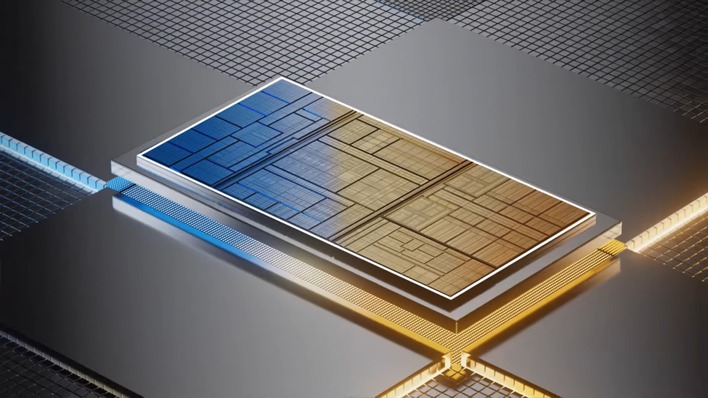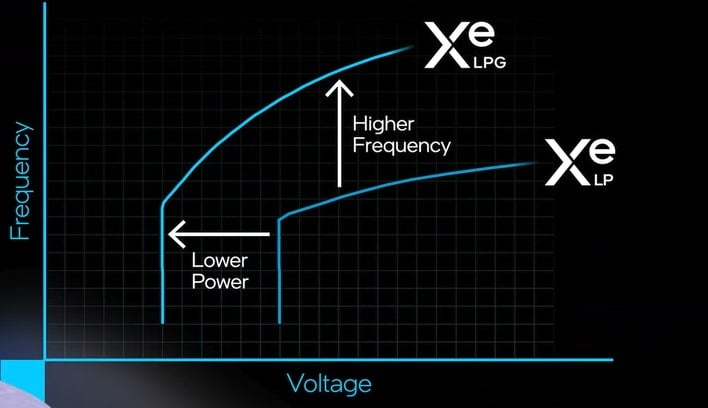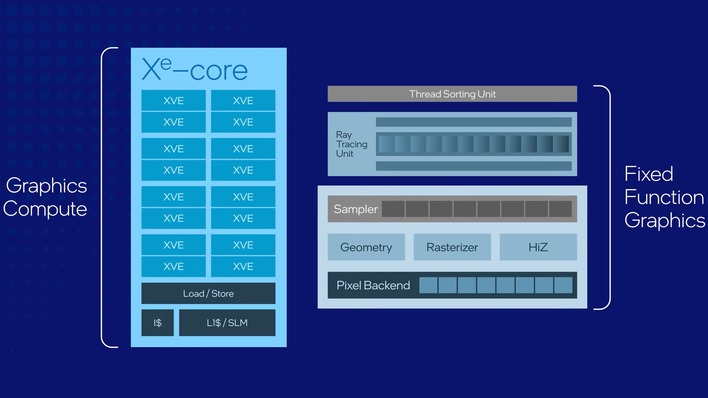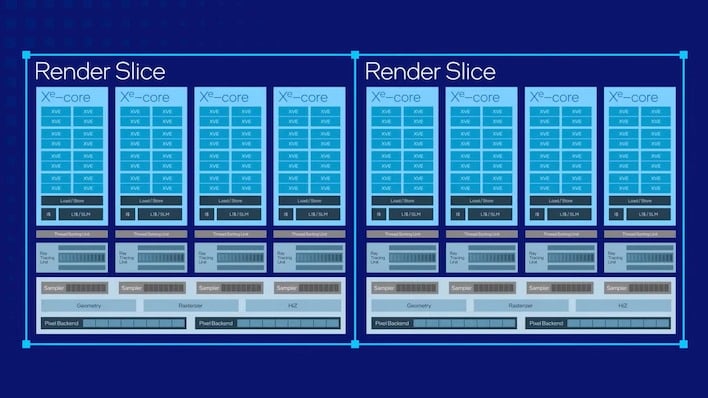Intel Details Meteor Lake GPU Clock, Core And Architecture Advancements

Meteor Lake, the first-generation "Core Ultra" processors, will be Intel's first "disaggregated" or chiplet-based CPUs. The launch of these important chips is less than a month away, and Intel is continuing to drip-feed details to the press and the public. The latest news comes from a video posted to the "Intel Technology" YouTube channel, where Tom "TAP" Petersen explains how Intel achieved double the graphics performance-per-watt in Meteor Lake.

That double comparison is against Alder Lake, not against Raptor Lake, but the graphics subsystems of those processors are fundamentally the same. TAP points out that Intel achieved these gains through improvements in three key areas: clock rates, architecture, and simply making a bigger GPU. A cynic might point out that this is simply how you make a faster GPU, but there are a few interesting details in the video.
Foremost among them is early in the video where TAP explains that the disaggregated nature of Meteor Lake allows Intel to do interesting things with the structure of the integrated GPU. A graphics processor is typically composed of three parts: a graphics engine that handles 3D duties, a display engine that handles output composition, and a media engine that takes care of video encoding and decoding.
TAP explaining the three areas that Intel improved to gain 100% in graphics performance.
As it happens, the media engine on Meteor Lake is actually on the processor's SoC tile. This means that the processor can power down the GPU tile that contains the graphics and display engines even when the user is watching a video. That could drastically improve the battery life of Meteor Lake laptops when used to watch videos.
The functions on the dedicated GPU tile are centered around graphics, compute, and AI processing, and that tile is designed using the Xe-LPG architecture. We've written about Xe-LPG several times before, but the short version is that it's basically Xe-HPG—the architecture used in discrete arc GPUs—without XMX units. This makes it worse at AI processing, but it does retain DP4a support so that it can still run XeSS upscaling.

Petersen explains that the Meteor Lake iGPU gets some of its performance improvements from higher clocks that come as the result of both design optimizations (to allow for higher clocks) as well as a die shrink in comparison to Alder Lake. The GPU tiles for Meteor Lake are fabricated at TSMC on that company's N5 process, and that allows for both lower minimum voltage as well as a higher clock rate at the same time, compared to the Xe-LP graphics in Alder Lake.
The other improvements come from architectural changes in Xe-LPG over Xe-LP and from the simple fact that it's a 33% larger GPU in comparison to Alder Lake. Meteor Lake's biggest GPU configuration, which will be branded as Arc Graphics, includes a fairly beefy GPU with two Xe-LPG slices, each containing four Xe cores totaling 128 Xe Vector Engines with a total of 1024 shaders, 64 texture units, and 32 ROPs. This is fundamentally the same number of graphics resources as found in a GeForce GTX 1650 Ti or Radeon RX 6500 XT.
Notably, the Xe-LPG architecture fully supports DirectX 12 Ultimate including ray-tracing and AI features, even though it lacks the XMX matrix math units of Xe-HPG. We were impressed with the ray-tracing performance of Arc in our recent review of the Predator BiFrost Arc A770 GPU where the card was more-or-less able to keep pace with similarly-specced NVIDIA Ampere GPUs. It's not impossible to imagine playable ray-tracing performance out of a Meteor Lake iGPU.
Intel's upcoming Meteor Lake processors are less than a month away from launch, so it's no surprise that the company is divulging additional details about how the new parts will work. In its own words, Intel says that Meteor Lake is its "largest shift in client SoCs in 40 years." We're intensely curious to get our hands on a system sporting one of the new CPUs, and as soon as we do, you'll know everything we can glean from it. So stay tuned.



